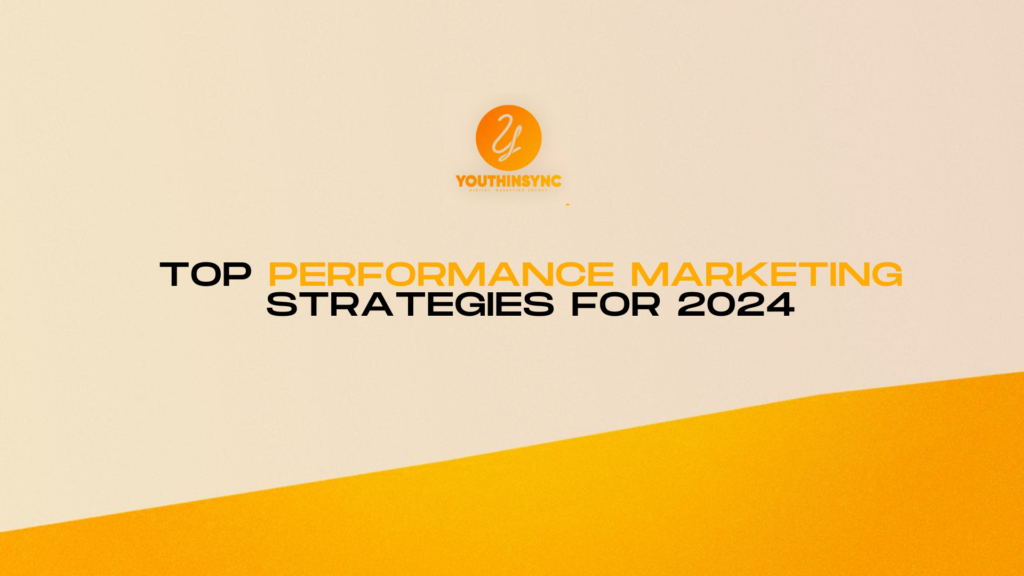Introduction: The Evolving Landscape of Performance Marketing
Performance marketing has significantly evolved from its early days, where metrics were limited to basic clicks and impressions. Today, it is a sophisticated and data-driven field that employs advanced strategies to achieve measurable results. The growth of digital technology and analytics has transformed performance marketing, enabling marketers to achieve more precise and impactful outcomes.
How Performance Marketing Has Changed Over the Years
Initially, performance marketing was primarily focused on direct response metrics. Advertisers measured success by tracking simple metrics such as clicks, impressions, and conversions. However, the field has expanded to include more complex data analysis and optimization techniques. Today’s performance marketing strategies leverage big data, predictive analytics, and advanced algorithms to enhance campaign effectiveness. The shift towards a more integrated and strategic approach allows marketers to create more personalized and targeted campaigns, resulting in higher engagement and better ROI.
Why 2024 is a Pivotal Year for Digital Marketers
In 2024, the landscape of digital marketing is marked by rapid technological advancements and changing consumer behaviors. Key factors include the rise of AI technologies, evolving privacy regulations, and shifting consumer preferences. These developments present both challenges and opportunities for marketers. Staying ahead in this dynamic environment requires a deep understanding of emerging trends and the ability to adapt strategies accordingly. This year is critical for digital marketers to embrace new tools and techniques that can drive better performance and achieve business goals.
Embracing AI and Automation in Performance Marketing
The Role of AI in Predictive Analytics and Targeting
Artificial Intelligence (AI) is at the forefront of performance marketing innovation. AI-powered tools are transforming how marketers approach predictive analytics and targeting. By analyzing large volumes of data, AI algorithms can forecast customer behavior, optimize ad placements, and enhance targeting precision. This enables marketers to anticipate trends, personalize messaging, and improve campaign effectiveness. For instance, AI can predict which segments are most likely to convert, allowing for more strategic allocation of marketing resources.
AI’s ability to process and analyze data in real-time also enhances decision-making. Marketers can quickly adjust their strategies based on emerging trends and insights, leading to more agile and responsive campaigns.
How Automation Can Improve Campaign Efficiency
Marketing automation is another crucial component of modern performance marketing. Automation tools streamline repetitive tasks, freeing up time for marketers to focus on strategic activities. Automated processes include ad bidding, email campaigns, and customer segmentation. By automating these tasks, marketers can improve efficiency, reduce manual errors, and enhance overall campaign effectiveness.
For example, automated ad bidding systems can adjust bids in real-time based on performance data, ensuring that budget is allocated optimally. Similarly, automated email marketing campaigns can be personalized and triggered based on user behavior, increasing engagement and conversion rates.
Tools and Platforms Leading the AI Revolution
Several tools and platforms are leading the integration of AI in performance marketing. Google’s Smart Bidding utilizes machine learning to optimize ad bids for maximum performance. HubSpot’s AI-driven analytics provide insights into customer behavior and campaign effectiveness, allowing for data-driven decision-making. Facebook’s automated ad tools offer features such as dynamic creative optimization and automated audience targeting, helping marketers achieve better results with less manual intervention.
These tools are at the forefront of the AI revolution in marketing, providing powerful capabilities to enhance campaign management and optimization.
Advanced Audience Segmentation and Personalization
Hyper-Segmentation: The Power of Detailed Targeting
Hyper-segmentation involves breaking down your audience into highly specific segments to target more precisely. This approach allows for more personalized messaging and higher engagement rates. By dividing your audience into smaller, more defined groups, you can tailor your marketing efforts to address the unique needs and preferences of each segment.
For example, a retailer might segment their audience based on purchase history, demographics, and browsing behavior. This level of detail enables the creation of targeted offers and messaging that resonate more strongly with each segment, leading to increased conversion rates and improved customer satisfaction.
Personalization Tactics to Increase Conversion Rates
Personalization is a key tactic for improving conversion rates. By delivering dynamic content and tailored messaging, marketers can make interactions more relevant and engaging. Personalized emails, product recommendations, and targeted ads are effective ways to enhance the user experience and drive conversions.
Data plays a crucial role in personalization. By leveraging insights into user behavior and preferences, marketers can create more relevant ad experiences. For example, a user who frequently browses for fitness products might receive personalized recommendations for new workout gear or exclusive discounts on health supplements.
Using Data to Drive More Relevant Ad Experiences
Data is essential for creating relevant ad experiences. By analyzing user behavior, preferences, and interactions, marketers can deliver ads that are more likely to resonate with their audience. This data-driven approach allows for continuous optimization of ad strategies and ensures that campaigns are aligned with audience needs.
For example, a travel company might use data to identify users who have shown interest in beach destinations. By targeting these users with ads featuring tropical vacation packages, the company can increase the likelihood of conversions and drive more bookings.
Leveraging Video and Interactive Content
The Rising Influence of Video in Performance Marketing
Video content is becoming increasingly influential in performance marketing. It offers a dynamic way to engage users and effectively convey messages. From short-form videos on social media to live streams and webinars, incorporating video into your strategy can lead to higher engagement and conversions.
Video ads are particularly effective because they combine visual and auditory elements to capture attention. High-quality visuals, compelling storytelling, and clear calls-to-action are key components of successful video ads. Ensuring that videos are optimized for various devices and platforms is also crucial for maximizing their impact.
Interactive Content: Engaging Users and Driving Action
Interactive content, such as polls, quizzes, and interactive infographics, engages users and encourages active participation. This type of content not only captures attention but also provides valuable data for further optimization. Interactive elements can drive higher engagement rates and create a more memorable user experience.
For instance, a brand might use an interactive quiz to help users discover their ideal product. This engagement not only provides valuable insights into user preferences but also drives action by leading users to personalized product recommendations.
Best Practices for Creating High-Performing Video Ads
To create high-performing video ads, focus on the following best practices:
- High-Quality Visuals: Use professional-quality visuals to ensure that your video is visually appealing and engaging.
- Compelling Storytelling: Craft a narrative that resonates with your audience and communicates your message effectively.
- Clear Calls-to-Action: Include clear and concise calls-to-action that prompt viewers to take the desired action.
- Optimization for Devices: Ensure that your video is optimized for various devices and platforms to reach a broader audience.
By following these best practices, you can create video ads that capture attention, drive engagement, and deliver results.
Optimizing for Mobile-First Marketing
The Importance of Mobile Optimization in 2024
With the increasing dominance of mobile devices, optimizing for mobile is essential in 2024. Mobile optimization ensures that ads and content are designed with mobile users in mind, providing a seamless and enjoyable experience across all devices.
Mobile optimization involves designing responsive ads and landing pages that adapt to different screen sizes. This approach improves user experience, reduces bounce rates, and increases the likelihood of conversions.
Strategies for Creating Mobile-Responsive Campaigns
To create mobile-responsive campaigns, consider the following strategies:
- Responsive Design: Design ads and landing pages to adjust automatically to various screen sizes and orientations.
- Fast Load Times: Ensure that mobile pages load quickly to prevent user frustration and abandonment.
- Mobile-Friendly CTAs: Use large, easy-to-click buttons and clear calls-to-action that are optimized for mobile users.
By implementing these strategies, you can enhance the effectiveness of your mobile marketing efforts and drive better results.
Mobile-Specific Channels: In-App Advertising and More
Mobile-specific channels, such as in-app advertising and SMS marketing, provide additional opportunities to reach mobile users. In-app ads can target users based on their app usage and preferences, while SMS marketing allows for direct communication with users through text messages.
In-app advertising and SMS marketing can be highly effective for engaging users and driving conversions. By leveraging these channels, you can enhance your mobile marketing strategy and achieve better results.
Harnessing the Power of Social Commerce
How Social Media Platforms Are Shaping E-Commerce
Social media platforms are increasingly becoming major players in e-commerce. Features like shoppable posts, social storefronts, and integrated payment options allow users to shop directly through social channels. This integration streamlines the purchasing process and enhances the overall shopping experience.
Social media platforms offer unique opportunities for engaging with users and driving sales. By leveraging these features, brands can create a more seamless shopping experience and increase their reach.
Integrating Social Commerce into Your Performance Marketing Strategy
To integrate social commerce into your performance marketing strategy, consider the following approaches:
- Create Engaging Content: Develop content that resonates with your audience and encourages interaction.
- Leverage Influencers: Partner with influencers to promote your products and drive traffic to your online store.
- Use Social Ads: Utilize social media ads to target users and drive conversions.
By incorporating social commerce into your strategy, you can enhance your online presence and drive better results.
Cross-Channel Marketing: Creating a Seamless User Journey
The Benefits of a Cohesive Cross-Channel Strategy
A cohesive cross-channel strategy ensures a consistent user experience across various platforms. By integrating messaging and promotions, you can create a unified brand presence and improve overall campaign effectiveness.
Cross-channel marketing allows you to reach users at different touchpoints and deliver a consistent message. This approach enhances user experience and drives better results by providing a seamless journey from one channel to another.
How to Integrate Multiple Channels for Better Performance
To integrate multiple channels effectively, consider the following strategies:
- Consistent Messaging: Ensure that your messaging is consistent across all channels to create a unified brand experience.
- Coordinated Campaigns: Align your campaigns across channels to maximize impact and reach.
- Data-Driven Insights: Use data to track performance across channels and make informed adjustments.
By integrating multiple channels, you can enhance your marketing efforts and achieve better performance.
Measuring and Analyzing Cross-Channel Success
Tracking and analyzing cross-channel performance is crucial for optimizing your strategy. Use analytics tools to measure the effectiveness of your campaigns across different channels and identify areas for improvement.
Key metrics to track include engagement rates, conversion rates, and return on investment (ROI). By analyzing these metrics, you can gain insights into campaign performance and make data-driven adjustments to enhance results.
Conclusion: Preparing for a Successful 2024
Recap of the Key Strategies for 2024
To succeed in 2024, focus on leveraging AI, embracing personalization, optimizing for mobile, utilizing video and interactive content, and integrating social commerce. These strategies will help you stay ahead in the competitive landscape of performance marketing and drive better results.
Actionable Steps to Implement These Strategies
Assess your current marketing efforts and identify areas for improvement. Implement the strategies discussed, monitor performance, and make data-driven adjustments to ensure continued success.
Looking Ahead: What’s Next in Performance Marketing?
As the digital landscape evolves, stay informed about emerging trends and technologies. Adapt your strategies to remain competitive and drive success in the ever-changing world of performance marketing.
For more insights into the latest marketing trends, check out this HubSpot guide on Marketing Trends

